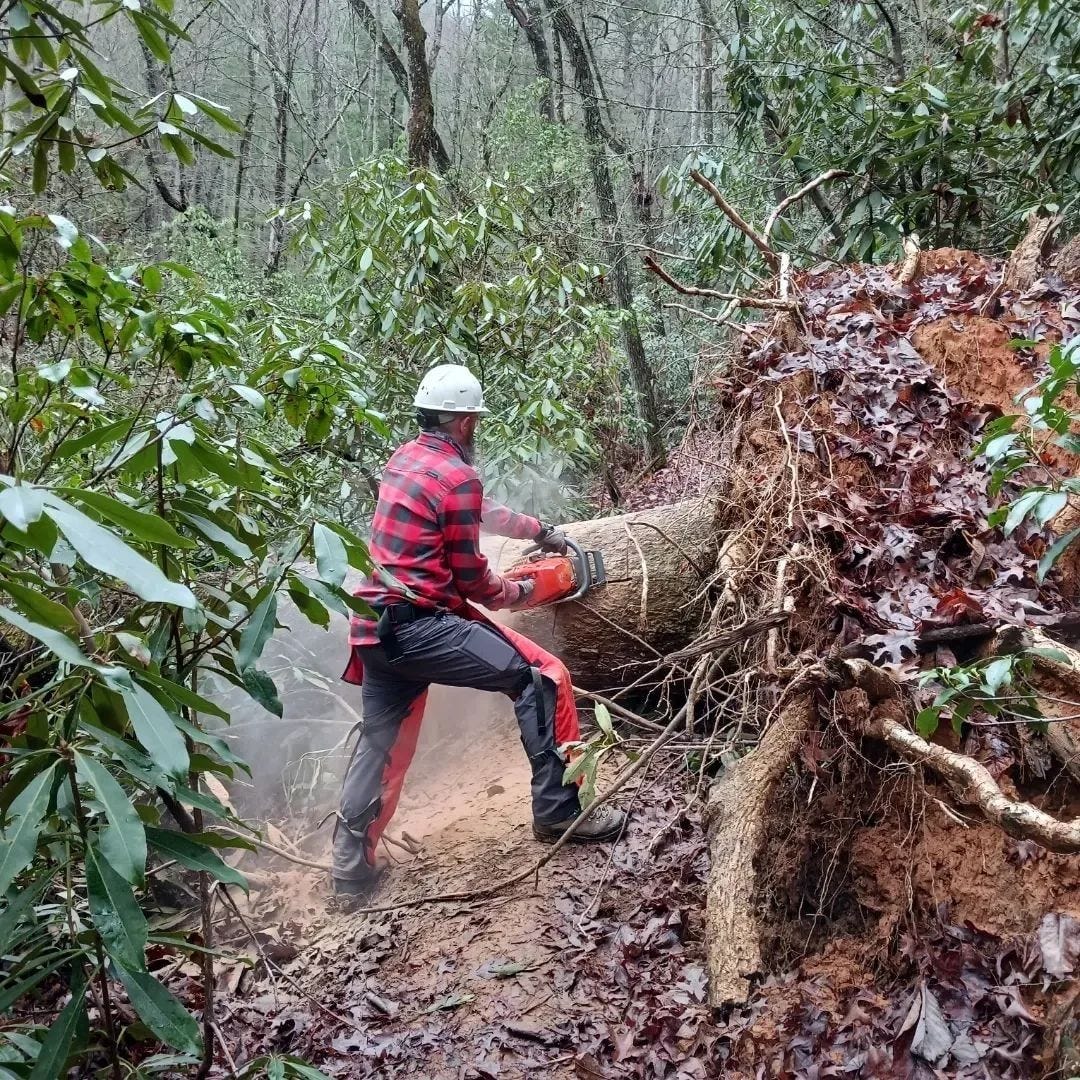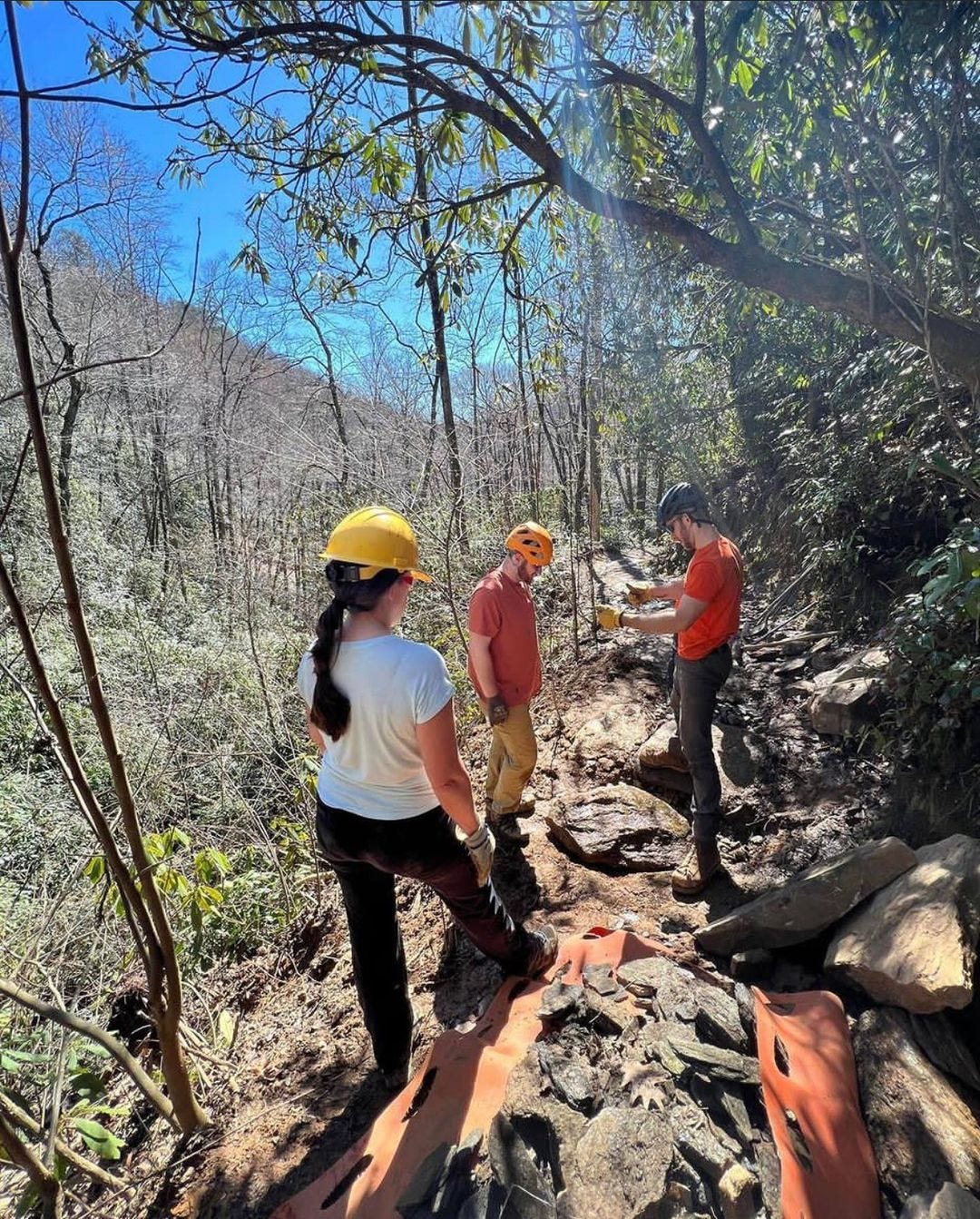Without Trails, We Don't Need Mountain Bikes
So why isn't trail advocacy at the forefront of online media?
Trail advocacy may not seem like one of the most exciting or most frequently written about topics if you look at the majority of major publications that focus on bikes, but it’s certainly one of the most important. And, just because it’s not something that drives a lot of clicks, generous amounts of ad revenue, or isn’t a heavily influenced post about a new product doesn’t mean it’s not worth discussing. In fact, it’s quite the opposite because, without trails, we don’t need bikes to ride on them.
So where are the stories?
Why isn’t everyone talking about it if it's so important? Simply put, trail advocacy stories can be a challenge for major publications. I know this because I’ve experienced it firsthand. Numerous times over the years, I either pitched or witnessed someone else propose a story about someone or a community that was doing something remarkable surrounding trail advocacy that clearly was worth sharing with the world. Sometimes, these stories were published; more often, however, and at a very disproportionate rate to other pitches, they wouldn’t make it into the spotlight. Oftentimes, I was reminded in one way or another that, historically, those stories don’t receive the same amount of views that many other types of content could. Oftentimes disappointed, I realigned my focus on the stories that paid the bills.
Now, I know that I’m not the only person with this experience, and it’s certainly not isolated to one publication. This is widespread. What’s also widespread is how nearly everyone working in media knows and understands the importance of trail advocacy and those stories, and I believe that many do want to tell them, but they’re not as “engaging” as some other features that take less time to develop and result in far greater engagement. It doesn’t help the bottom line. While it would be a prudent and proactive strategy to do everything possible to support trail advocacy through increased exposure, cycling media is quite reactionary in its nature. It’s driven by event and tech reporting, sponsorship and advertising interests, audience expectations (clicks and comments), and resource limitations - there are only so many people with the necessary experience to report on these topics who are willing to do so.

Where do brands fit into all of this?
It’s a David vs Goliath story. Brands making products have an exponentially larger budget to spend on marketing and advertising with publications than the non-profits and land managers keeping trails we use those products on open. Naturally, those product stories, sponsored content, race coverage, and everything else deemed important by the ones with the money tend to rise to the top. The clicks and engagement that lead to visibility are critical with sponsor and ad-supported business models. With that, it’s hard to blame anyone for prioritizing staying in business and satisfying the ad contracts and resulting exposure that keeps the lights on and people employed.
In my experience, most publications work to balance this the best they can. One publication doing this well is Freehub Magazine, and I would highly recommend checking it out if you’re not familiar with it already. The team at Freehub is proof positive that you can make stories about trail advocacy interesting and engaging. They have consistently supported content that lifts up the people and communities who set an example and make a difference, especially in trail advocacy. For example, last year, they did a feature on Seth and Berm Park, which you’ve likely heard about. If you haven’t or if you want to learn more about how Berm Park came to be, you can read that story here.
There are numerous additional publications making an effort to support trail advocacy and trails or are tied to efforts to support it, and there are many brands that actively support advocacy work as well. As well-intentioned as it may appear, at times, brand support can come with agendas that aren’t always made clear, and I know there are numerous cases where this “advocacy” work would be difficult to sustain if it didn’t have a strong and direct correlation to the bottom line. However, that’s another conversation entirely.
Trail advocacy doesn’t deserve to be and shouldn’t be an afterthought. And with my personal opinions and thoughts on the matter aside, for the sake of the longevity and growth of trails and, in turn, mountain biking, it can’t be. It should be mainstream, at the forefront of discussions. For us, this is something we believe in, and we’re taking action on.
Advocacy matters
A couple of years ago, Seth and I became involved with The North Carolina Great Trails State Coalition. Our team created and managed the media, content, and communications around the Coalition’s Year of the Trail campaign for 2023. The goal of the campaign was to increase awareness for trails of all kinds, along with the many physical, mental, social, and economic benefits they bring, while also recognizing those who steward trails. It was the essence of grassroots trail advocacy, and the work put in paid off in a big way.
The campaign and message of trails reached over 50 million people through earned media outreach, events, sponsorships, and advertising. More importantly, state legislators established and funded The Great Trails State Program, a competitive grant program for new trail development and extension of existing trails, including paved trails, greenways, and natural surface trails for biking, hiking, walking, equestrian use, and paddling. The overall financial investment committed by the state in this program and others was $54.9 million dollars. This doesn’t include the additional tens of millions in federal grant money for trails that has been tied to the success of the 2023 campaign. The video below shows some highlights from the year.
We’ll dive more into the nuances of this ongoing project and share some stories from it at a later time. It’s a case study from which many communities can learn, and we’d love to see it duplicated elsewhere. In the meantime, in North Carolina, we’re working to continue elevating trails in the communities around us, using the success of 2023 as a “kick-off” of sorts for trail advocacy moving forward.
In closing, I’ll propose this question - Would you rather be asked, “Where do you want to ride?” or “What bike do you ride?” I know the answer for me is, without a doubt, “where” because it’s the action, it’s the place. The “where” is what matters, and trails are the where. There’s no point to the rest without the where, and trails don’t advocate for, build, or maintain themselves. Without trails, we don’t need mountain bikes, and it’s past time for everyone to focus a bit more on trails.
We’re going to continue to dive into the details of trail advocacy along with some of the people and organizations involved with it. If you have questions or specific topics surrounding it you want us to focus on, let us know in the comments below.






Grass Roots Trail Advocate here. I really wish I had the time and comfort level producing content and having a robust social media program. We've got the wonderful problem of having too many opportunities but have the age old problem of not having near enough advocates, builders, fundraisers and volunteers. Hopefully we get some social media savvy folks come along to fill the gaps while the rest of us are out in the woods and coaching for our fledgling NICA League here in Kentucky. If anyone has an easy button answer I'd be glad to hear it.
Well said, and great insight Daniel. I think about these things a lot, moreover I think about how we can identify root issues behind the lack of engagement regarding trail advocacy.
We all agree that mountain biking is fun. The learning, the doing, the enjoyment of progression.....the excitement of new and shiny bikes (and parts). These are things that bring us pleasure, and thus things we will engage with in MTB media.
Another big reason I hear from lots of folks is the enjoyment that the social aspect brings to their lives. I can't even begin to count the many times I've heard people cite this as a top reason they engage in the sport. This is evident in the number of group rides that are well attended.
In most of the cases above, little persuasion is needed to gain interest. These things are not advertised to have, nor perceived to carry negative associated baggage.
Historically, trail maintenance has carried a much different message. Often, trail advocacy has found itself sitting on top of a negative campaign platform. Well, negative verbiage at least. Commonly associated sayings such as "Trails don't build/maintain themselves" and "No dig, no ride", carry a very different tone. Regardless of positive intention, the language itself is negative.
"Group rides don't attend themselves", said no one ever, and for good reason.
I get that in the grand scheme this may seem relatively insignificant. However, I truly believe we need to change this mindset and approach if we're ever to increase the willingness of the public to get more involved, understand the importance of, and personally advocate for trails. While this is only a piece of the puzzle, it's one that can be easily be acted on by the people who carry the motivation for change. That's a huge leg up. An easy win that can ripple upwards.
For me personally, I love to do trail work. It taps into so many positive things. The chance to be outside, the ability to directly improve my enjoyment of trails, the satisfaction of immediately seeing the results of my effort, the opportunity to tap into that childhood enjoyment of playing in the dirt and creating. Perhaps the most surprising positive outcome for me is the social aspect, and the bonding that occurs with the people you build with. This circles back to all of the people who participate in MTB for the social aspect. It's a lot easier to carry a conversation while bench cutting next to your buddy than it is with your back to them 20' further down the trail.
As a more introverted person, social opportunities are not at the forefront of my daily needs. Yet still, the social aspect has proven to be something I cherish with trail work, and the more trail work I do, the more my passion for trail advocacy grows. My appreciation for what it takes, and what truly happens behind the scenes gets stronger with every day that I'm out there.
The more people are met with the opportunity to perceive the positives in the advocacy side of trails, the more likely they will participate, and potentially grow the popularity and engagement in what will ultimately benefit everyone.